
|
|
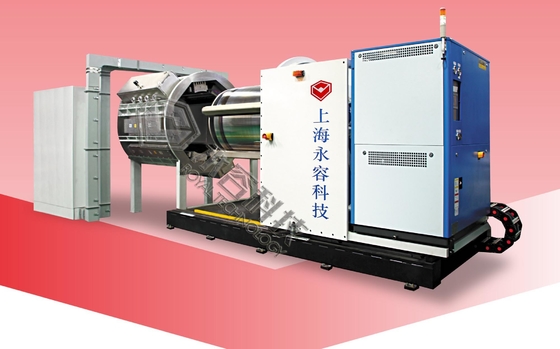

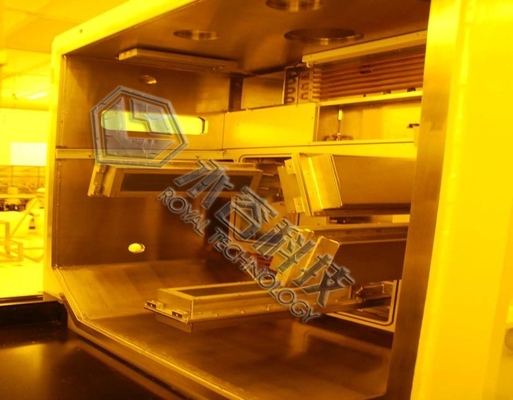
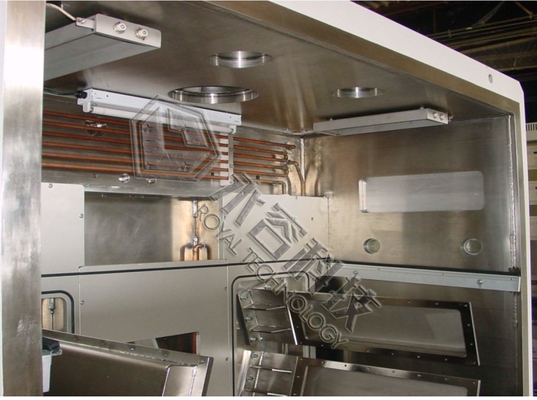
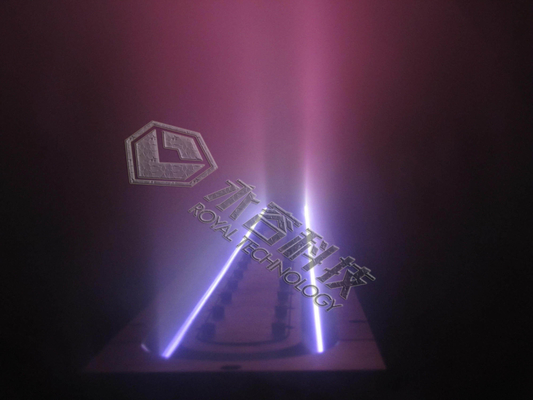
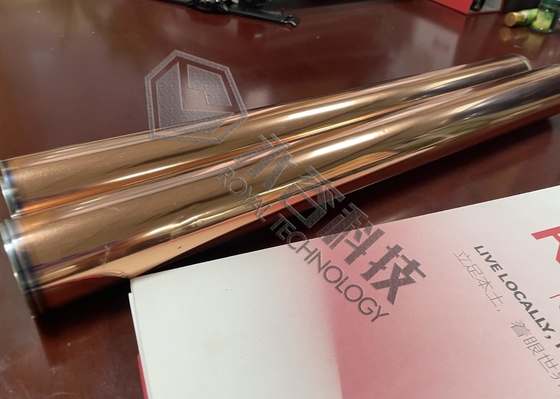
| Brand Name: | ROYAL TECHNOLOGY |
| Model Number: | RT-R2R |
| MOQ: | 1 |
| Price: | NEGOTIABLE |
| Payment Terms: | L/C,T/T |
| Supply Ability: | 4 sets/month |
A Roll-to-Roll Web Vacuum Sputtering System is a type of manufacturing equipment used for depositing thin films onto a flexible substrate that is continuously fed from one roll to another. This system is commonly used in industries like electronics, optics, and packaging for applications such as coatings, solar cells, and flexible electronics.
In this system, a vacuum chamber is used to deposit thin films onto a moving web of material. Sputtering is a process where atoms or molecules are ejected from a solid target material due to bombardment of the target by energetic particles. These ejected atoms or molecules then form a thin film on the substrate.
The Roll-to-Roll Web Vacuum Sputtering System typically includes components like:
Vacuum Chamber: This is where the sputtering process takes place under controlled vacuum conditions.
Substrate Handling System: This system controls the movement of the flexible substrate through the sputtering process.
Sputtering Cathodes with Metal Targets: These are the materials from which atoms or molecules are sputtered to form the thin film on the substrate.
Power Supplies: These provide the necessary power for the sputtering process.
Gas Supply System: This system supplies the required gases for the sputtering process.
Control System: This controls the process parameters such as deposition rate, film thickness, and uniformity.
The Roll-to-Roll Web Vacuum Sputtering System offers advantages like high throughput, scalability, and the ability to coat large areas with thin films. It is suitable for mass production of thin film materials on flexible substrates.
In a Roll-to-Roll Web Vacuum Sputtering System, various types of sputtering targets can be used depending on the desired properties and applications of the thin films being deposited. Some common types of sputtering targets include:
Metal Targets: These are made of pure metals or metal alloys and are commonly used for depositing metal thin films. Examples include aluminum, copper, gold, silver, titanium, and stainless steel targets.
Oxide Targets: These targets are composed of metal oxides and are used for depositing oxide thin films. Examples include indium tin oxide (ITO), zinc oxide (ZnO), and tantalum oxide (Ta2O5) targets.
Nitride Targets: These targets are used for depositing nitride thin films. Examples include titanium nitride (TiN) and aluminum nitride (AlN) targets.
Silicide Targets: These targets are composed of metal silicides and are used for depositing silicide thin films. Examples include titanium silicide (TiSi2) and tungsten silicide (WSix) targets.
Sulfide Targets: These targets are used for depositing sulfide thin films. Examples include molybdenum disulfide (MoS2) and zinc sulfide (ZnS) targets.
Composite Targets: These targets are composed of multiple materials and are used to deposit thin films with specific properties. For example, a target can be a combination of metal and ceramic materials for unique film compositions.
Alloy Targets: These targets are made of alloy compositions and are used for depositing alloy thin films with specific properties. Examples include nickel-chromium (NiCr), nickel-titanium (NiTi), and cobalt-chromium (CoCr) alloy targets.
The choice of sputtering target depends on factors such as the desired film composition, thickness, structure, and properties. By using different types of sputtering targets in the Roll-to-Roll Web Vacuum Sputtering System, a wide range of thin film materials can be deposited for various applications in industries such as electronics, optics, energy, and more.
Applications:
electronic paper, flexible circuits, photovoltaic, medical strips, RFID (Radio Frequency Identification) and Low-E film, ITO thin film coatings
Roll-to-Roll (R2R) web sputtering deposition processes offer a versatile and scalable method for depositing thin films on flexible substrates continuously.
This technology finds a wide range of applications across various industries due to its ability to coat large areas at high speeds with thin films of different materials.
Some common applications of R2R web sputtering deposition include:
Flexible Electronics: R2R web sputtering is widely used in the production of flexible electronic devices such as flexible displays, RFID tags, smart cards, and wearable electronics. It enables the deposition of thin film transistors, conductive electrodes, and barrier layers on flexible substrates.
Solar Cells: Thin film solar cells benefit from R2R web sputtering for depositing semiconductor or absorber layers such as amorphous silicon, cadmium telluride, and
copper indium gallium selenide (CIGS) on flexible substrates. This technology allows for cost-effective and high-throughput manufacturing of thin film photovoltaic devices.
Barrier Films: R2R web sputtering is used to deposit barrier films with excellent gas barrier properties on flexible substrates to protect sensitive materials from moisture, oxygen, and other environmental factors. These barrier films find applications in packaging, electronics, and displays.
Decorative Coatings: R2R sputtering deposition is utilized in the production of decorative coatings on flexible substrates for applications in automotive trim, consumer electronics, and architectural glass. Materials like metallic layers, oxide coatings, and multilayer interference coatings can be applied using this technique.
Flexible Sensors: R2R web sputtering enables the deposition of thin film sensor elements on flexible substrates for applications in wearable sensors, healthcare devices, and IoT applications. Sensors such as temperature sensors, humidity sensors, and gas sensors can be fabricated using this technology.
Optical Films: R2R sputtering is employed for depositing optical coatings on flexible substrates for applications in anti-reflection coatings, reflective coatings, optical filters, and color filters used in displays, lenses, and optical devices.
Printed Electronics Integration: R2R web sputtering can be integrated with printed electronics processes to create hybrid devices with both printed and sputtered components.
This integration enables the production of cost-effective and functional electronic devices on flexible substrates.
Overall, the versatility and scalability of R2R web sputtering deposition technology make it suitable for a wide range of applications in industries such as electronics, energy, packaging, optics, and sensors, where thin films on flexible substrates are required.
![]()
R2R Machine Layout
![]()
| The MultiWeb Coater provides the following key features: | ||||||||
| A. One chamber divided into multi-pressure zones to accommodate various deposition sources. | ||||||||
| B. Multi-Source simultaneous deposition capabilities in one web pass, for multi-layer coating. | ||||||||
| C. Reversible web winding direction enables deposition of unlimited layers without breaking vacuum. | ||||||||
| D. Precision web handling mechanisms with edge-guide to allow multiple passes without loss of alignment. (Optional) | ||||||||
| E. AC Invert web drive system for accurate control of multiple web speeds. | ||||||||
| F. In-line optical and/or resistance thickness monitoring systems, to control precise deposition thickness and uniformity. (Optional) | ||||||||
| G. Chamber is constructed of SUS304L Stainless with low out gassing components to insure deeper vacuum. | ||||||||
| H. Vacuum pumping by a combination of turbo-molecular pump and low temperature cryogenics, to provide clean vacuum without moisture or oil contamination. | ||||||||
| DEPOSITION FILMS | ||||||||
| 1. Substrate material: PET, PEN, PES, PI, PC, PA, TAC... Films | ||||||||
| 2. Substrate thickness: 15~300μm | ||||||||
| 3. Deposition methods: AC Reactive for SiO2(Dielectric); Pulsed DC for ITO (Metal & Conductor) | ||||||||
| 4. Oxide conductor TCO: ITO, AZO, IZO... | ||||||||
| 5. Metal conductor: Al, Cu, Mo, Ag... | ||||||||
| 6. Optical film: Ta2O5, Nb2O5, SiO2, TiO2... | ||||||||
| 7. Semiconductor: ZnO, InGaZnO... | ||||||||
| 8. Insulator: SiO2, SiNx, AlOx, AlNx... | ||||||||
| 9. Uniformity: ±5% Across Web | ||||||||
| GENERAL SPECIFICATIONS | ||||||||
| Vacum chamber body: single chamber multi-pressure zones | ||||||||
| Moveable carriages: Web Carriage | ||||||||
| Deposion Zone: 2 X Sputtering Zone (Optional: 3 Sputtering Zone) | ||||||||
| Sputtering Source: 2 X Dual Cathode Sputter Source (Optional: 3 Dual Cathode Sputter Source) | ||||||||
| Substrate Pre-treater: Linear Ion Source | ||||||||
| Web Width: 1300mm | ||||||||
| Winding Diameter: Φ600mm Max | ||||||||
| Winding Direction: Bi-directional | ||||||||
| Substrate thickness: 15~300μm | ||||||||
| Web Line Speed:0.5~10M/min | ||||||||
| Web Tension: 5.0PLI Max 0.5PLI Min | ||||||||
| Web Alignment: ±3mm (one pass) | ||||||||
| Hi-Vacuum Pump: Turbo Pump | ||||||||
| Rough Vacuum Pump: Dry pump & Blower combination | ||||||||
| Moisture Pump: Polycold Cryogenic | ||||||||
| Deposition Thickness Control: Monitoring (Optional) | ||||||||
| a: Transmit Optical; b: Eddy Current Resistance | ||||||||
| System Operation: PLC Based Computer System Operation | ||||||||
| VACUUM CHAMBER | ||||||||
| The vacuum chamber is constructed as a horizontal box made of SUS304L polished stainless steel, with the one ends flanged openings. The divided zone lower section will contain the deposition source with accessories, while the upper section will accommodate the web carriage. | ||||||||
| Chamber construction: Horizontal box with one flanged openings | ||||||||
| Chamber structure: Single chamber multi-pressure zone | ||||||||
| Chamber frame: SS41 Mild steel, painted | ||||||||
| Chamber material: SUS304L Polished stainless steel | ||||||||
| Pressure Zone Divider: Aluminum plate | ||||||||
| View port material: Polycarbonate | ||||||||
| Vacuum pressure zones: 4 ( 1 Winding Zone, 2 Deposition Zones, 1 Buffer Zone) |
![]() Sputtering Cathodes Distribution
Sputtering Cathodes Distribution
Our team of experienced technicians provides superior technical support and service for our Roll to Roll Coating Machine.
We are available to answer any questions or concerns you have about the machine and its operations. Our technicians are knowledgeable in all aspects of the machine's operation and maintenance, and can provide expert advice to ensure the best performance of the machine.
We also provide preventive maintenance and emergency service for your Roll to Roll Coating Machine. Our technicians have access to the latest technologies and training to ensure your machine is performing optimally. We also offer on-site training and technical support for the machine, as well as spare parts and accessories.
We strive to provide the highest level of customer service and satisfaction, and we are committed to ensuring that your Roll to Roll Coating Machine delivers the highest quality product every time. If you have any questions or concerns, please do not hesitate to contact us.